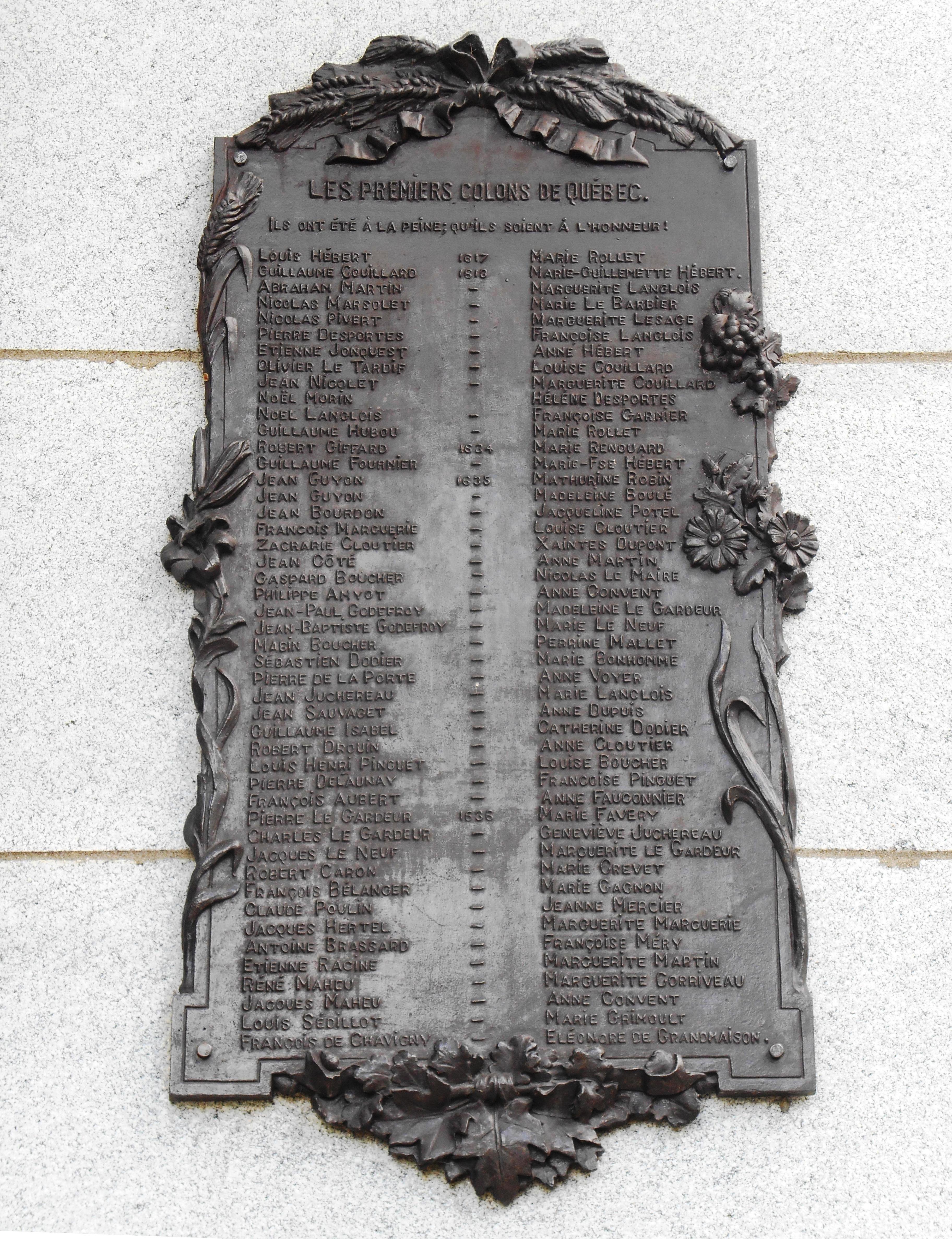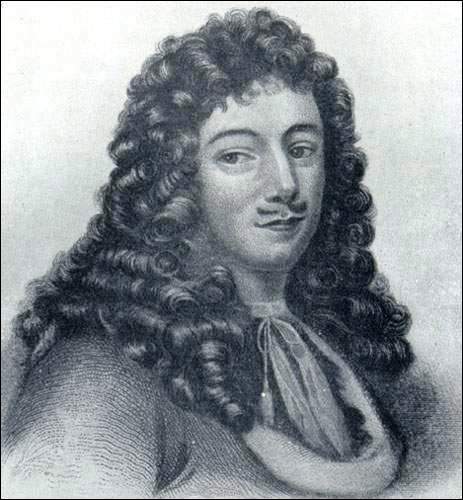|
Jean François Gaultier
Jean François Gaultier (6 October 1708 in La Croix-Avranchin – 10 July 1756 in Quebec) was a French physician and botanist. He was the king's physician for New France and was the regular physician at the Hôtel-Dieu de Québec. Gaultier, being one of the leading naturalists in Canada, supported Swedish botanist Pehr Kalm Pehr Kalm (6 March 1716 – 16 November 1779), also known as Peter Kalm, was a Swedish-Finnish List of explorers, explorer, botany, botanist, natural history, naturalist, and Agricultural economics, agricultural economist. He was one of the most ... in his 1749 exploring voyage of Quebec. Jean-François Gaultier married Madeleine-Marie-Anne on 12 March 1752. References 18th-century French botanists People from the Province of Normandy 1708 births 1756 deaths 18th-century French physicians People of New France {{France-botanist-stub ... [...More Info...] [...Related Items...] OR: [Wikipedia] [Google] [Baidu] |
La Croix-Avranchin
La Croix-Avranchin () is a former commune in the Manche department in Normandy in north-western France. On 1 January 2017, it was merged into the commune Saint-James. 8 July 2016 See also *Communes of the Manche department
The following is a list of the 445 communes of the Manche department of France.
The communes cooperate in the following intercommunalities (as of 2025):
[...More Info...] [...Related Items...] OR: [Wikipedia] [Google] [Baidu] |
Quebec City
Quebec City is the capital city of the Provinces and territories of Canada, Canadian province of Quebec. As of July 2021, the city had a population of 549,459, and the Census Metropolitan Area (including surrounding communities) had a population of 839,311. It is the twelfthList of the largest municipalities in Canada by population, -largest city and the seventh-List of census metropolitan areas and agglomerations in Canada, largest metropolitan area in Canada. It is also the List of towns in Quebec, second-largest city in the province, after Montreal. It has a humid continental climate with warm summers coupled with cold and snowy winters. Explorer Samuel de Champlain founded a French settlement here in 1608, and adopted the Algonquin name. Quebec City is one of the List of North American cities by year of foundation, oldest European settlements in North America. The Ramparts of Quebec City, ramparts surrounding Old Quebec () are the only fortified city walls remaining in the ... [...More Info...] [...Related Items...] OR: [Wikipedia] [Google] [Baidu] |
New France
New France (, ) was the territory colonized by Kingdom of France, France in North America, beginning with the exploration of the Gulf of Saint Lawrence by Jacques Cartier in 1534 and ending with the cession of New France to Kingdom of Great Britain, Great Britain and History of Spain (1700–1808), Spain in 1763 under the Treaty of Paris (1763), Treaty of Paris. A vast viceroyalty, New France consisted of five colonies at its peak in 1712, each with its own administration: Canada (New France), Canada, the most developed colony, which was divided into the districts of Quebec (around what is now called Quebec City), Trois-Rivières, and Montreal; Hudson Bay; Acadia in the northeast; Terre-Neuve (New France), Terre-Neuve on the island of Newfoundland (island), Newfoundland; and Louisiana (New France), Louisiana. It extended from Newfoundland to the Canadian Prairies and from Hudson Bay to the Gulf of Mexico, including all the Great Lakes of North America. The continent-traversing ... [...More Info...] [...Related Items...] OR: [Wikipedia] [Google] [Baidu] |
Dictionary Of Canadian Biography
The ''Dictionary of Canadian Biography'' (''DCB''; ) is a dictionary of biographical entries for individuals who have contributed to the history of Canada. The ''DCB'', which was initiated in 1959, is a collaboration between the University of Toronto and Laval University. Fifteen volumes have so far been published with more than 8,400 biographies of individuals who died or whose last known activity fell between the years 1000 and 1930. The entire print edition is online, along with some additional biographies to the year 2000. Establishment of the project The project was undertaken following a bequest to the University of Toronto from businessman James Nicholson for the establishment of a Canadian version of the United Kingdom's ''Dictionary of National Biography''. In the spring of 1959, George Williams Brown was appointed general editor and the University of Toronto Press, which had been named publisher, sent out some 10,000 announcements introducing the project. Work started in ... [...More Info...] [...Related Items...] OR: [Wikipedia] [Google] [Baidu] |
Hôtel-Dieu De Québec
The Hotel-Dieu de Québec () is a teaching hospital located in Quebec City, Quebec, Canada, and affiliated with Université Laval's medical school. It is part of the Centre hospitalier universitaire de Québec (CHUQ), a network of five teaching hospitals and several specialized institutions. Its areas of expertise include cancer treatment, kidney disease and cochlear implants. It has an affiliated research centre, the Centre de recherche de l’Hôtel-Dieu de Québec. This hospital was the first such facility in Canada, and the first in North America, north of Mexico. History The hospital was officially founded in 1637 in order to meet the colony's need for healthcare by Marie-Madeleine de Vignerot, the Duchesse d'Aiguillon (1604-1675), a niece of Cardinal Richelieu. She entrusted the task to the Canonesses of St. Augustine of the Mercy of Jesus, the Hospitaller Sisters, whose spiritual vocation was nursing. Three young canonesses left their monastery in Dieppe, Seine-Maritime ... [...More Info...] [...Related Items...] OR: [Wikipedia] [Google] [Baidu] |
Pehr Kalm
Pehr Kalm (6 March 1716 – 16 November 1779), also known as Peter Kalm, was a Swedish-Finnish List of explorers, explorer, botany, botanist, natural history, naturalist, and Agricultural economics, agricultural economist. He was one of the most important Apostles of Linnaeus, apostles of Carl Linnaeus. In 1747, he was commissioned by the Royal Swedish Academy of Sciences to travel to the North American colonies in order to bring back seeds and plants that might be useful to agriculture. Among his many scientific accomplishments, Kalm can be credited with the first description of Niagara Falls written by a trained scientist. In addition, he published the first scientific paper on the North American 17-year periodical cicada, ''Magicicada septendecim.'' Kalm wrote an account of his travels that was translated into numerous European languages; a 20th-century translation remains in print in English as ''Peter Kalm's Travels in North America: The English Version of 1770,'' translated ... [...More Info...] [...Related Items...] OR: [Wikipedia] [Google] [Baidu] |
18th-century French Botanists
The 18th century lasted from 1 January 1701 (represented by the Roman numerals MDCCI) to 31 December 1800 (MDCCC). During the 18th century, elements of Enlightenment thinking culminated in the Atlantic Revolutions. Revolutions began to challenge the legitimacy of monarchical and aristocratic power structures. The Industrial Revolution began mid-century, leading to radical changes in human society and the environment. The European colonization of the Americas and other parts of the world intensified and associated mass migrations of people grew in size as part of the Age of Sail. During the century, slave trading expanded across the shores of the Atlantic Ocean, while declining in Russia and China. Western historians have occasionally defined the 18th century otherwise for the purposes of their work. For example, the "short" 18th century may be defined as 1715–1789, denoting the period of time between the death of Louis XIV of France and the start of the French Revolution ... [...More Info...] [...Related Items...] OR: [Wikipedia] [Google] [Baidu] |
People From The Province Of Normandy
The term "the people" refers to the public or common mass of people of a polity. As such it is a concept of human rights law, international law as well as constitutional law, particularly used for claims of popular sovereignty. In contrast, a people is any plurality of persons considered as a whole. Used in politics and law, the term "a people" refers to the collective or community of an ethnic group or nation. Concepts Legal Chapter One, Article One of the Charter of the United Nations states that "peoples" have the right to self-determination. Though the mere status as peoples and the right to self-determination, as for example in the case of Indigenous peoples (''peoples'', as in all groups of indigenous people, not merely all indigenous persons as in ''indigenous people''), does not automatically provide for independent sovereignty and therefore secession. Indeed, judge Ivor Jennings identified the inherent problems in the right of "peoples" to self-determination, as i ... [...More Info...] [...Related Items...] OR: [Wikipedia] [Google] [Baidu] |
1708 Births
In the Swedish calendar it was a leap year starting on Wednesday, one day ahead of the Julian and ten days behind the Gregorian calendar. Events January–June * January 1 – Charles XII of Sweden invades Russia, by crossing the frozen Vistula River with 40,000 men. * January 7 – Bashkir rebels besiege Yelabuga. * January 12 – Shahu I becomes the fifth Chhatrapati of the Maratha Empire in the Indian subcontinent. * February 26 – HMS ''Falmouth'', a 50-gun fourth-rate ship of the line built at Woolwich Dockyard for the British Royal Navy, is launched. * March 11 – Anne, Queen of Great Britain, withholds Royal Assent from the Scottish Militia Bill, the last time a British monarch vetoes legislation. * March 23 – James Francis Edward Stuart, Jacobite pretender to the throne of Great Britain, unsuccessfully tries to land from a French fleet in the Firth of Forth in Scotland. * April 8 – Easter Sunday: The first performance of Georg ... [...More Info...] [...Related Items...] OR: [Wikipedia] [Google] [Baidu] |
1756 Deaths
Events January–March * January 16 – The Treaty of Westminster is signed between Great Britain and Prussia, guaranteeing the neutrality of the Electorate of Hanover, controlled by King George II of Great Britain. * January 27 – Wolfgang Amadeus Mozart is born in Salzburg, Austria, to Anna Maria and Leopold Mozart. * February 7 – Guaraní War: The leader of the Guaraní rebels, Sepé Tiaraju, is killed in a skirmish with Spanish and Portuguese troops. * February 10 – The massacre of the Guaraní rebels in the Jesuit reduction of Caaibaté takes place in Brazil after their leader, Noicola Neenguiru, defies an ultimatum to surrender by 2:00 in the afternoon. On February 7, Neenguiru's predecessor Sepé Tiaraju has been killed in a brief skirmish. As two o'clock arrives, a combined force of Spanish and Portuguese troops makes an assault on the first of the Seven Towns established as Jesuit missions. Defending their town with cannons made out of bamboo, the ... [...More Info...] [...Related Items...] OR: [Wikipedia] [Google] [Baidu] |
18th-century French Physicians
The 18th century lasted from 1 January 1701 (represented by the Roman numerals MDCCI) to 31 December 1800 (MDCCC). During the 18th century, elements of Enlightenment thinking culminated in the Atlantic Revolutions. Revolutions began to challenge the legitimacy of monarchical and aristocratic power structures. The Industrial Revolution began mid-century, leading to radical changes in human society and the environment. The European colonization of the Americas and other parts of the world intensified and associated mass migrations of people grew in size as part of the Age of Sail. During the century, slave trading expanded across the shores of the Atlantic Ocean, while declining in Russia and China. Western historians have occasionally defined the 18th century otherwise for the purposes of their work. For example, the "short" 18th century may be defined as 1715–1789, denoting the period of time between the death of Louis XIV of France and the start of the French Revolut ... [...More Info...] [...Related Items...] OR: [Wikipedia] [Google] [Baidu] |




